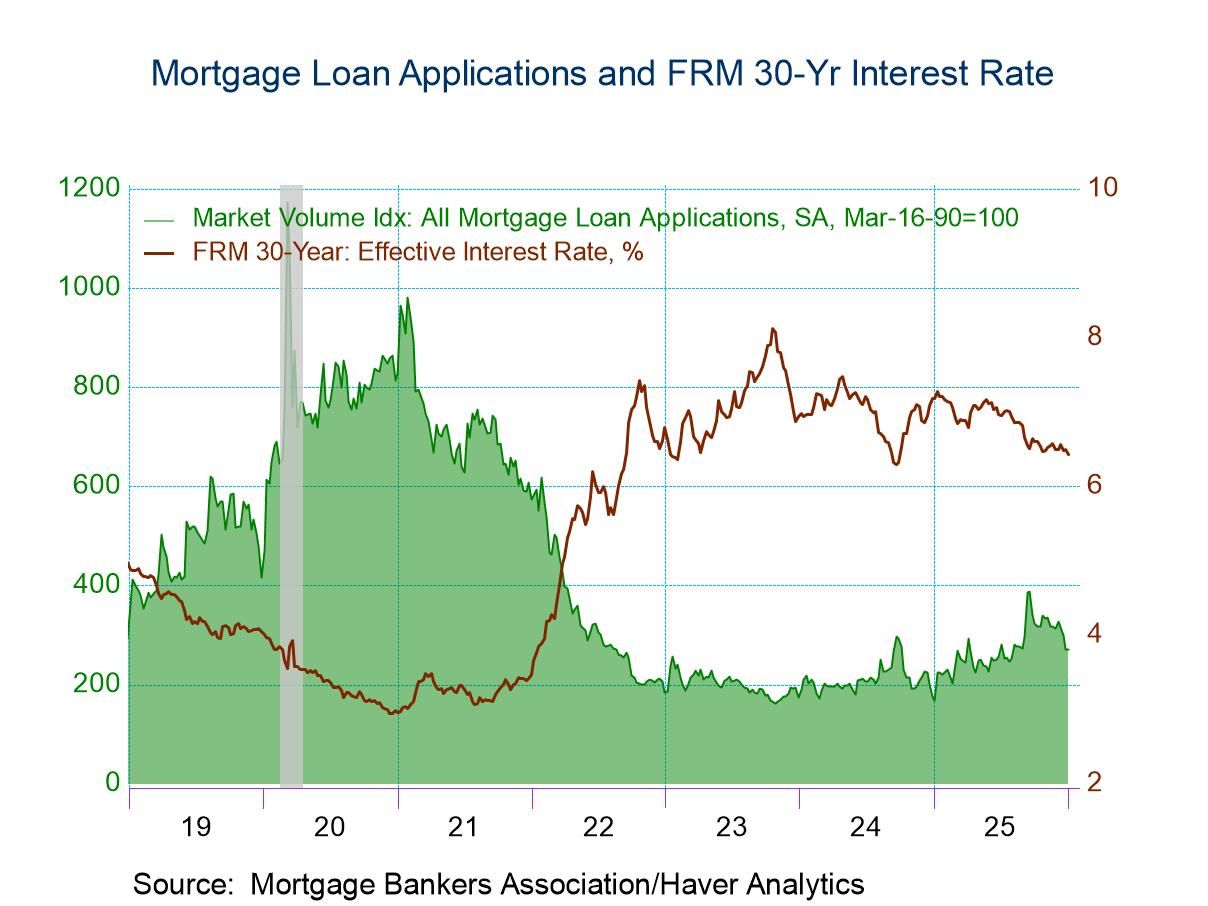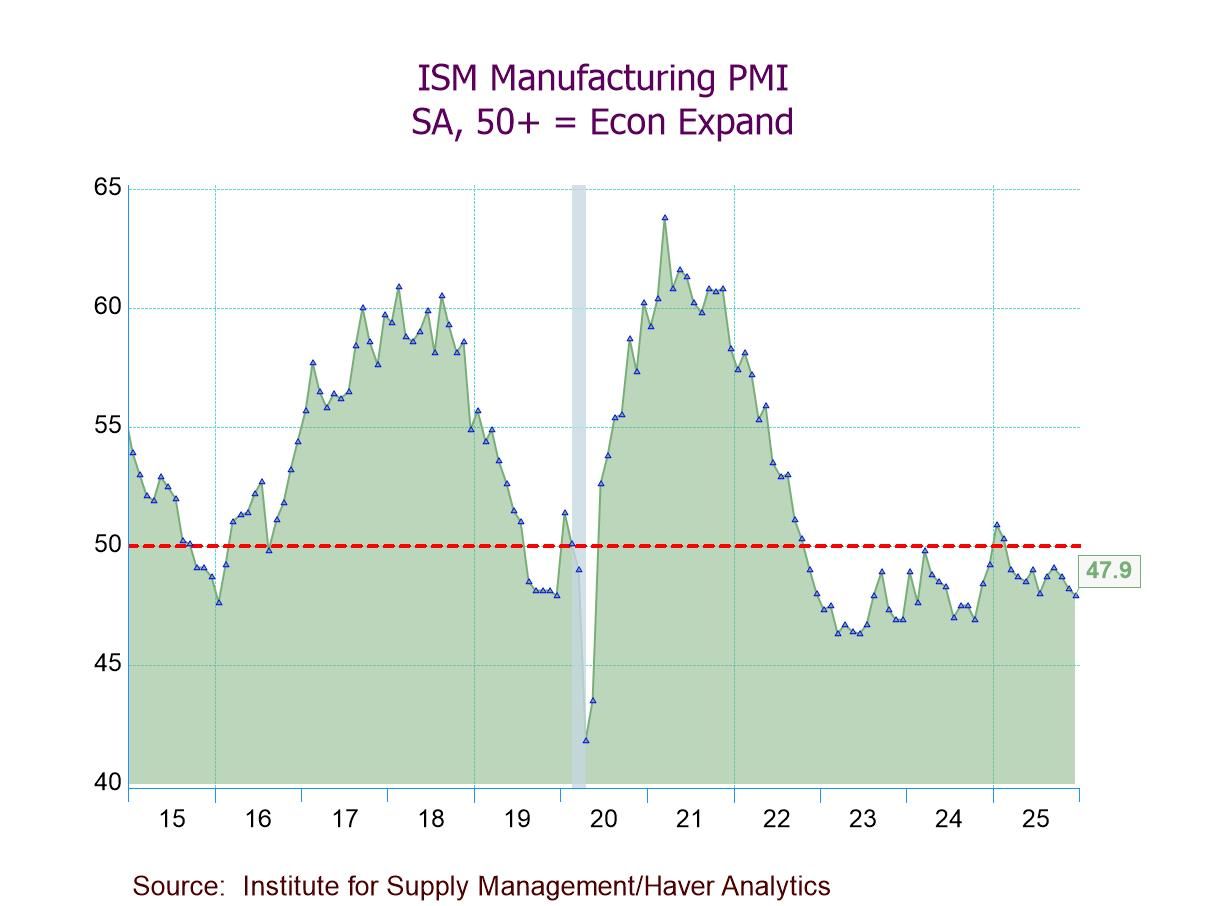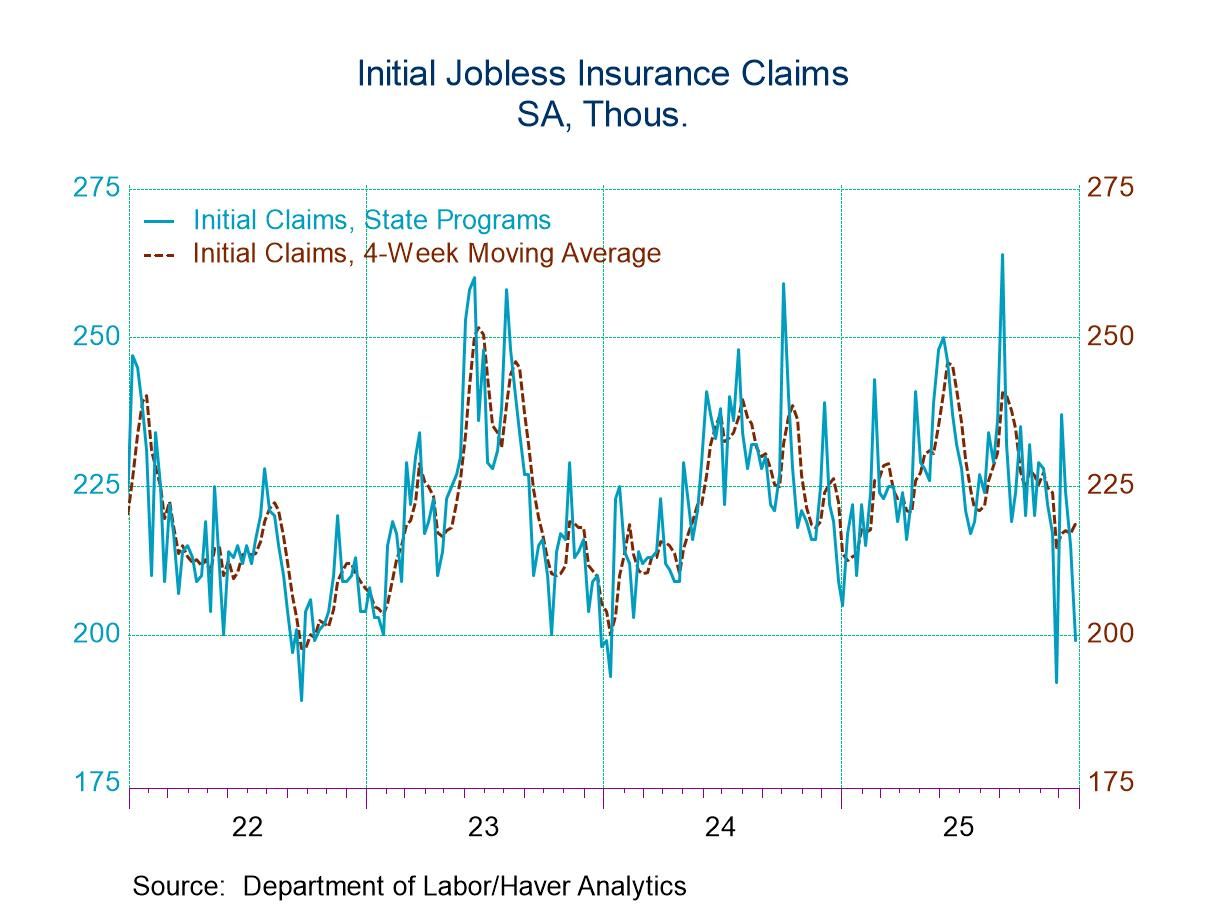German Orders Slip and Are Revised Lower

German orders fell in April when an increase had been expected; the decline in March had been revised to be larger and as a result the picture of German manufacturing had become bleaker in April.
The run of data on German manufacturing for the month is quite negative with very little that could be regarded as a bright spot or a positive result. A close look at the graphic, however, shows that foreign real orders are on a gradual uptrend (for their y/y growth rate) and have poked up above 0 to post a positive growth rate over 12 months. There's even a positive growth rate over six months that's stronger, still. But then, over three months, all that goes away. German domestic order growth rates deteriorate and decelerate from -8.3% over 12 months to an annual rate decline of 9.6% over six month to an annualized drop of 10.4% over three months. The headline for orders shows declines, hovering at 1.2% to 1.3% at an annual rate over 12 months and six months and then plunging at a 7.7% annual rate over three months. The year-over-year growth rate is poor, the trend in the shorter growth rates is poor, and the historic comparison shows a year ago drop of 10.9%. German orders have been weak for quite some time and that picture is continuing to paint on the same palette with the same colors looking ahead.
Sector sales fell by 1% in April after declining by 0.3% in March and posting a 1% rise in February. For manufacturing, there's also a sequential deterioration, with a 1.1% gain in February, a 0.4% annualized drop in March and a 0.9% annual rate drop in April. Sequential growth rates, however, from 12-months to six-months to three-months show the pace of decline for real sector sales diminishing for the overall metric as well as for all manufacturing sales. That's a little bit of good news, but those statistics still show overall real sales falling at a 1.2% annual rate over three months and manufacturing sales falling at 0.8% at an annual rate over three months.
Industrial indicators from the EU Commission in April all post negative numbers. In April, the metrics weakened in Germany, France, and in Italy but they strengthened slightly in Spain, compared to their March result. Sequentially the negative German numbers get progressively weaker from 12-months to six-months to three-months. The figures for France get slightly better, improving from a -8.2 reading over 12 months to a -5.6 reading over three months. Italy’s results vacillate between -6.5 to -7. Spain’s readings progressively improve from -6.9 over 12 months to a six-month average of -6 to a three-month average of -4.9. For the industrial data, we calculated queue standings that rank the April values in their historic queue of numbers back to 1990. On that basis, the German figures are the weakest of all with the 12.5 percentile standing, Italy has a 26.9 percentile standing, France has a 39.9 percentile standing; only Spain has a standing above its historic median, but the queue value of 52.9% is barely above the threshold of 50 that identifies where its median is located.
Quarter-to-date readings show us where the April figures reside in growth terms relative to the first quarter average results. German total orders, foreign orders, and domestic orders all are declining with the larger decline coming out of domestic orders at -12.6% at an annual rate. Real sales are declining at a 5.2% annual rate, with manufacturing sales declining at a 4.8% annual rate.

All readings for orders real sector sales as well as the industrial confidence readings from the EU Commission show that April values all reside below their level in January 2020, just before COVID struck. This is a four-year period of abject under-performance. And furthermore, the data show us there is very little occurring that indicates there might be any upswing in place. In fact, today the European Central Bank has delivered on a widely expected rate cut even though inflation continues to run higher than its target and it has for some time. However, the most perplexing thing about the ECB move today is that even with its inflation performance over target, and as it is raising its inflation outlook, it still implemented a rate cut today. As someone who was inducted into the central bank fraternity back in 1977, working for Paul Volcker at the Federal Reserve Bank of New York, I simply have no reference for understanding what central banks are doing in this modern age. They express inflation targets and then they ignore them. With inflation overshooting, central banks are willing to plan rate cuts based on forecasts of lower inflation even though they continue to experience substantial inflation overshooting. Or they cut rates on bad performance and with a soured outlook. We are seeing the same kind of neglect of inflation and inflation targeting on both sides of the Atlantic. It isn't just the ECB, and it isn't just the Federal Reserve. If it's something in the water, I guess we must blame the Atlantic Ocean. One thing is certain: much more than climate is changing.
Robert Brusca
AuthorMore in Author Profile »Robert A. Brusca is Chief Economist of Fact and Opinion Economics, a consulting firm he founded in Manhattan. He has been an economist on Wall Street for over 25 years. He has visited central banking and large institutional clients in over 30 countries in his career as an economist. Mr. Brusca was a Divisional Research Chief at the Federal Reserve Bank of NY (Chief of the International Financial markets Division), a Fed Watcher at Irving Trust and Chief Economist at Nikko Securities International. He is widely quoted and appears in various media. Mr. Brusca holds an MA and Ph.D. in economics from Michigan State University and a BA in Economics from the University of Michigan. His research pursues his strong interests in non aligned policy economics as well as international economics. FAO Economics’ research targets investors to assist them in making better investment decisions in stocks, bonds and in a variety of international assets. The company does not manage money and has no conflicts in giving economic advice.





 Global
Global
